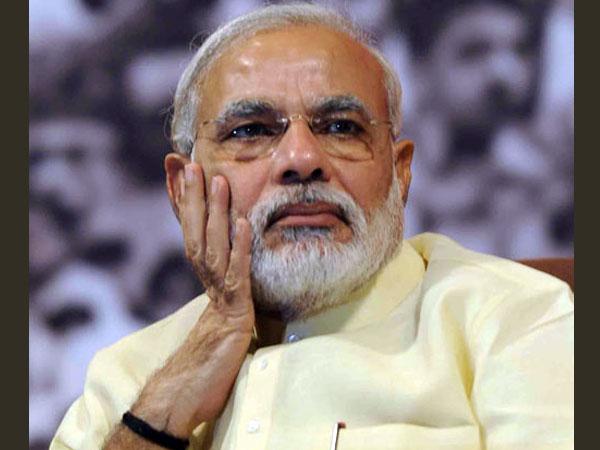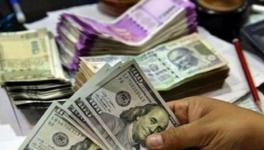COVID-19: Is the Youth Turning its Back on the Modi Government?

Image Courtesy: Oneindia
During the days of the British Raj in India, the colonial government had implemented a policy of offering a reward for every dead cobra brought to the mandarins of the Raj; a move attempted to control the population of venomous cobras plaguing the citizens of Delhi. The policy initially appeared to be successful, with enterprising snake catchers claiming bounties and fewer cobras being seen in the city. Yet, instead of tapering off over time, there was a steady increase in the number of dead cobras being presented for a bounty payment each month. Nobody knew why.
The reason? People had started breeding cobras for the reward! On realising this, the scheme was scrapped, and the newly-bred cobras were released, as they were no longer an income-source for the people breeding them, thus increasing the problem. Over the years, the term ‘Cobra Effect’ gained currency; it described an attempted solution for a problem that led to unintended consequences that made the problem worse.
More recently, the Cobra Effect seems to have stung the Central Government. A defining trait of the current dispensation has been its disproportionate focus on optics. Derided for being a government that is more interested and invested in PR and headline-management and less in matters of governance or in disaster-management, the Modi government has been receiving a lot of flak for its handling – or rather mishandling – of the second wave of the COVID-19 pandemic. To make matters worse, the government also seems to be losing the battle of optics.
Perception, or image-management, an art that the Modi government has mastered in recent years to reap rich political dividends, does not seem to be working anymore. The government’s ultra-offensive and heavy-handed approach of dealing with criticism and bad press, to enable it to be in control of the narrative war, has backfired badly. The Cobra Effect seems to playing out here. The government's coercive and heavy-handed tactics like asking social media platforms to take-down posts critical of its handling of the pandemic, or the angry rejoinders written in response to the scathing editorials in leading global dailies, have only worsened and aggravated the PR crisis.
Even as the country was in the throes of a deadly second wave of COVID-19, PM Modi’s government was busy doing what it does best – indulging in event management and brand building. On April 7, even as the second wave had begun wreaking havoc across the nation, the Central Government was once again caught napping as beds, ventilators, oxygen and vaccine doses were in short supply. Then the Prime Minister was holding the fourth and first virtual edition of 'Pariksha Pe Charcha' his interaction with students, teachers and parents ahead of the board examinations season.
While the Prime Minister’s conventional wisdom-defying advice of attempting difficult questions before the easy ones during an exam was widely lampooned on social media, one would be missing the forest for the trees if one fails to see the mistiming of the event. The PM’s interaction with students where he advised them to deal with difficult topics first, instead of running away from them, came just a week before the Prime Minister chaired a high-level meeting with officials from the education ministry and the CBSE. In the meeting the decision was taken to cancel Class 10 exams and postpone Class 12 exams following a nationwide outcry over conducting examinations amid a surge in COVID-19 cases. The timing of Pariksha Pe Charcha thus raises some important questions: Did the Prime Minister have no clue about the spike in cases and the demand to do away with exams on April 7 when he went ahead with his annual interaction with students? Worse, did the PM decide to go ahead with his annual PR gimmick despite knowing that board exams would have to be cancelled? Either way, the entire episode displays the government’s callousness in a time of grave crisis.
Even as people are running from pillar to post to find beds and Oxygen cylinders for their loved ones and social media is swamped with SOS calls, image management continues to be the government's top-most priority. On May 5, The Hindustan Times reported that against the backdrop of the pandemic, around 300 top officials of the Central Government participated in a virtual workshop aimed at helping them “create a positive image of the government”, manage “perception through effectively highlighting positive stories and achievements”, and making the government “be seen to be sensitive, bold, quick, responsive, hard-working etc.
In the last one month, the Modi government has been under fire, at home and abroad, for leading the country into an unmitigated disaster. It has reinforced the view that it is an establishment perennially in campaign mode and has no qualms in turning a blind eye to governance. It also makes for bad optics for a government which has always scored an A+ in political optics; the only thing that matters to it. So, what explains the recent PR gaffes?
To undestand the political rationale behind the moves, we will have to revisit the electoral verdict of 2014 that heralded the meteoric rise of ‘Brand Modi’. In 2014, in a young and restless India, growing increasingly cynical of its politicians, especially those in power, saw Narendra Modi’s ability to connect with their hopes and aspirations and first-time voters powered his maiden victory.
The saffron party had got twice as many votes as the Congress among first-time voters. In 2019, even as young voters continued to prefer the BJP more than the grand-old party, more than voters from other age groups, the gains made by the Modi-led BJP among first-time voters compared to the 2014 elections, were the least. It is an undisputed fact that the young voters played a pivotal role in the twin victories of the BJP in 2014 and 2019.
As a scam-tainted UPA-II government was on its last legs, Modi appeared on the national scene as ‘the right man at the right time with the right rhetoric’, capturing the youth vote lock, stock and barrel. Seven years and two massive mandates later, the BJP faces an imminent threat of the tide turning against it and losing the narrative or perception war, as discontent simmers in the wake of rising unemployment, the COVID-19 pandemic and the shambolic state of the economy.
Numerically, this is an electoral constituency which is too big to ignore. There were 133 million first-time voters in 2019. In 2024, Gen Z (a colloquial term used to refer to those born after 1995) will be a potent electoral force. According to a recent survey by the Centre for Policy Research, as many as 46% of Gen Z respondents are worried about the current state of the economy. The Gen Z voters were also reported to be most likely to disagree with the current regime’s contentious ideological projects like the CAA and NRC. Most of them (about 42%) also voiced their disagreement with the clampdown on universities like police action in Jamia and JNU. This is in sharp contrast to older age-groups, who still seem to be siding with, or at least giving the benefit of doubt to the Modi government.
The BJP is slowly losing its sheen and fumbling in the perception war. Having come into adulthood during the Modi years, it is unlikely that a key electoral constituency will buy the BJP’s theory of '60 years of Congress misrule' or the 'sins' of the Nehru-Gandhi dynasty.
Realising its shrinking support-base among young Indians, the government appears to have adopted a two-pronged approach to retain its support. To silence dissenting voices of students and young activists from across the aisle, the Modi government has adopted a heavy-handed approach by using draconian acts like sedition or the UAPA. Charging a 21-year-old climate activist with sedition, criminal conspiracy, spreading disaffection against the Indian state and promoting enmity for merely editing a toolkit in support of the farmers' protests is symbolic of the brazenness with which the current dispensation plans to deal with the reckless idealism and legitimate political opposition of the unabashedly political young Indian. To woo the supposedly apolitical or neutral young Indian, the PM has several PR ideas and events like Pariksha Pe Charcha.
Political pundits have heaped praises on the insatiable hunger of the BJP to win electoral battles and its well-oiled election machinery. This simplistic and oft-repeated analysis of the saffron party’s obsessions with winning elections, at the cost of ignoring governance, misses out on an important dimension. While achieving electoral success at any cost is an immediate goal of the present BJP, the real and larger, albeit understated goal, is to to mould the country's ideology into the Hindu frame, essential for long-term power and for the realisation of the Sangh Parivar’s much-cherished dream of establishing a 'Hindu Rashtra'.
Of late, the BJP’s tried and tested strategy of ‘forever being in campaign mode’ has backfired. While it may be far-fetched to link this with the party’s recent electoral reverses, the Modi government, which has always scored high on optics, is learning an important lesson the hard way: PR or image management will work only if the government starts working!
The sooner the Modi-led BJP wakes up to this reality, the better it will be, both for the party and the nation. How successful the contradictory, two-pronged strategy to keep the youth vote on its side will be, remains to be seen. But for now, one hopes that the Indian PM walks the talk by following his own advice of not running away from difficult topics. A good way to start will be to hold a press conference to practically demonstrate how to deal with the stress of exams!
The author is a freelancer based in Bombay and an alumnus of Mumbai’s St. Xavier’s College. His interests vary from politics, psephology, and journalism to regional Indian cinema. He tweets @Omkarismunlimit
Get the latest reports & analysis with people's perspective on Protests, movements & deep analytical videos, discussions of the current affairs in your Telegram app. Subscribe to NewsClick's Telegram channel & get Real-Time updates on stories, as they get published on our website.























